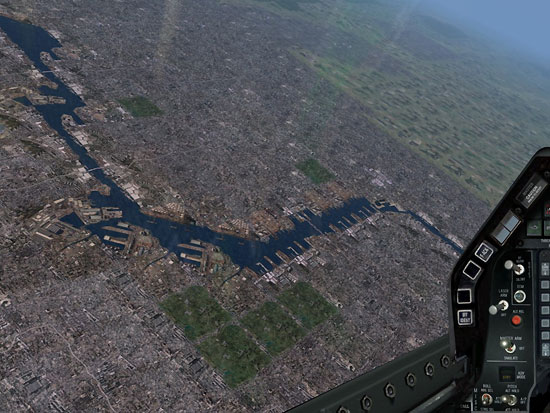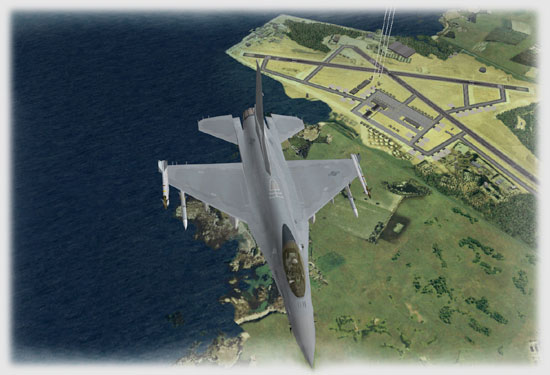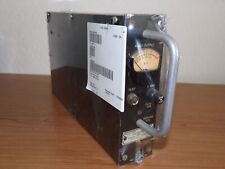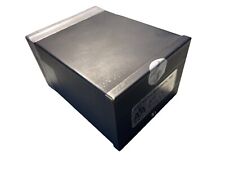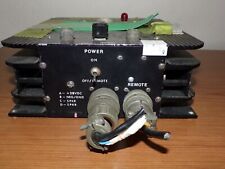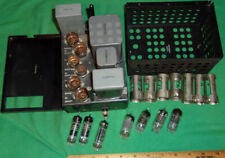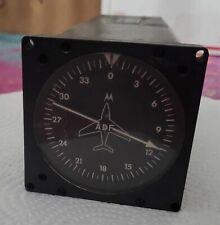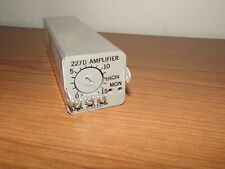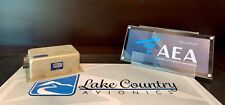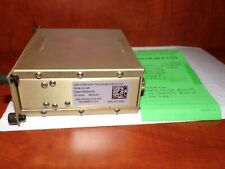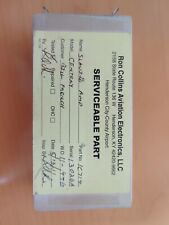20mm: Agreed, I think we all want the best for this amazing sim. Back to HiTiles itself, can you can share with us non-technical types something about how you do the magic you do?
Tom: I mainly work in Paintshop Pro, which is quite a powerful tool. Each texture consist of a seamless base layer and up to 10 layers of various terrain templates that I created during the years. This allows me to produce a huge variety of different textures. I also use a multitude of additional tools and macros to properly handle the color palette, which is very tricky, and partially automates cumbersome repeating tasks. There is a lot of boring work in the HiTilesAF, too. Finally, I remix and optimize the terrain tiling using Codec’s TerrainView tool.
20mm: Your site mentions the use of aerial imagery in putting together HiTiles and HiTilesAF. How is that done?
Tom: Most of it is aerial, because satellite images in the necessary detail are normally all copyrighted and can’t be used. It’s a huge collection of material from different public sources that I put together over the years. I used to study remote sensing, so I have had a natural interest in that stuff for years. I used this collection for ideas, scaling comparisons and template snippets, which were then heavily reprocessed, hand-edited and reassembled to produce a real-looking terrain.
20mm: Were there any special challenges that F4:AF presented?
Tom: Not in the terrain texture themselves, but rather in the packaging and installer software of the HiTilesAF. Lead Pursuit has done a very good job on stability and the multiplayer experience with Allied Force, and they want to make sure that third-party add-ons integrate well and keep up these standards. Working together with them was a very positive experience, as it all was in a very friendly and collaborative spirit and their feedback was extremely encouraging.
20mm: Good to hear. How much extra work was the season switcher, and tell us a little bit about how it operates in the F4:AF world.
Tom: The season switching is based on an algorithm I originally developed for the BMS series of old Falcon patches. I reused this algorithm in a small, but fast C++ application that converts the downloaded summer textures into the various seasons. The season switcher itself “just” swaps between the different texture packages and does a few other adjustments.
20mm: How about night flying, is there anything special or unusual about the onset of darkness as it applies to HiTilesAF? I always appreciated the neat lighting effects that HiTiles had in the previous builds of F4.
Tom: Unfortunately, the terrain texture night lights have been disabled in Falcon 4.0: Allied Force. I guess it’s because of the new graphics effects (terrain shading, cloud shadows etc.), as BMS initially encountered these problems, too. In the old Falcon engine, you could use 4 out of 256 colors per texture to add “lights”, pixels that changed into bright “light” colors once night fell. I used this in the classic HiTiles to “illuminate” lonesome farmhouses along farm roads, intense city lights or some airbase lights.
20mm: Understood. Well, perhaps some day! Is there any particular part of HiTilesAF, say downtown Seoul, that you are most proud of?
Tom: My favorite tiles are the Seoul City Harbors. Additionally, I also like the new farm rivers and roads, as they really show that the repeating patterns can be broken. And the transitions between wet (dark green) and dry (bright green) farmlands — because this involved the manual retiling of hundreds of square kilometers.
20mm: What a coincidence, I would have said the exact same thing. I cannot tell you how many times I have flown F4, and as I pass over Seoul, I bank the aircraft and take a look down at the city and especially the Harbor area. It really is a great piece of artwork.
I took this screenshot early in 2005, as a part of one of my Falcon 4 AAR’s. Obviously before F4:AF came out. That’s the city of Seoul, in particular the harbor area, off the left side of the aircraft.
You’ve talked about the Balkans terrain, was it significantly different from the Korean terrain? Harder, easier, or the same to work with?
Tom: About the same. Reworking Venice was a bit complex, but OTOH less manual retiling was needed on the Balkans.

